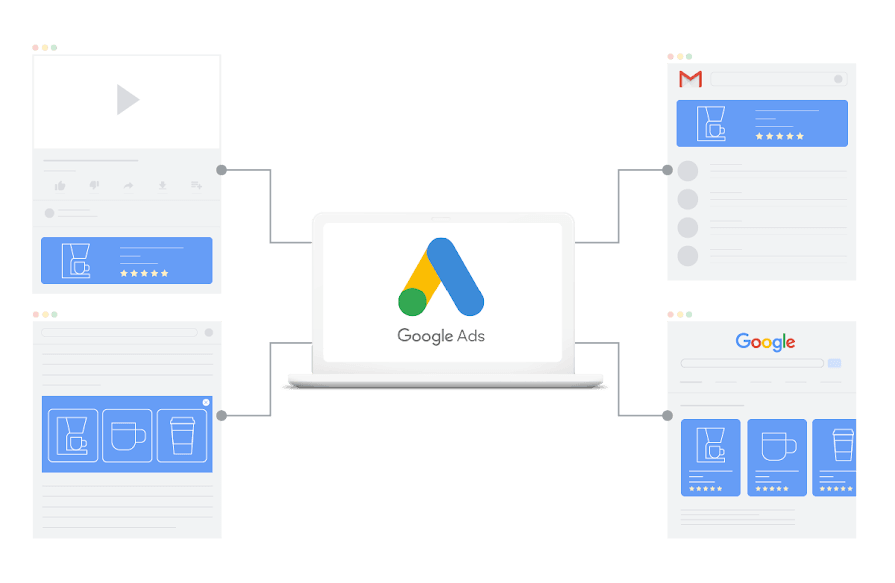A good video ad for social media is of the utmost importance when marketing a mobile game.
Here’s why.
Social networks like Facebook, Instagram, and TikTok give you access to a large and diverse audience. But to convert social media users to players, you need killer video advertisements that make people interested in your game.
In this guide, I explain the ins and outs of creating a winning video ad.
You’ll learn:
- What makes a great video ad for social media
- How to do research
- How to write a script
- What to do after making a video ad
I have also included practical tips for creating video ads and requirements for each social network.
What Are Video Ads for Social Media Used for?
Before we get into details about creating video ads for social media, let me explain what they’re used for.
Video ads for social media are created specifically for social networks like Facebook, Instagram, Snapchat, and TikTok. Their purpose is to get users for a mobile app or game. In other words, video ads are used for paid user acquisition.
However, they’re not the same as an app promo video.
The Difference Between a Video Ad and an App Promo Video
While both are used to acquire users, video ads and app promo videos are not the same thing.
App promo videos are used for Google Play and Apple’s App Store. The goal of an app promo video is organic user acquisition, while video ads are used for paid user acquisition.
Oftentimes, they look similar.
However, an app promo video should be focused on explaining the game (how it’s played, etc.) as well as on its features and benefits. It’s more like a game trailer or an explainer video. On the other hand, a video ad can also include game features and benefits, but usually just focuses on one or two. Oftentimes, video ads follow advertising trends and don’t necessarily look exactly like the game itself.
Furthermore, an app promo video is usually longer than a video ad, and the two are generally made in different dimensions.
What Makes a Good Video Ad for Social Media?
How do you know if a video ad is good?
Well, it needs to check a couple of different boxes.
Grabs Attention
Attention is an essential part of advertising. It is a qualitative measure of ad effectiveness.
In mobile game advertising, the goal is to get noticed among a sea of mobile games that are saturating the market. Mobile gamers have so many games to choose from – you need to make sure your game stands out.
A good video ad should accomplish that. If a video ad doesn’t attract attention, it means it’s not good.
Makes the Game Look Interesting
A video ad should also speak to gamers and make them want to play the game.
This means you need to make the game appealing to them. Think about all the game features and things that make it unique – gameplay mechanics, art, characters, etc.
Then think about how you can show them in a way that piques the interest of your target audience.
Boosts Downloads
Most importantly, a good video ad should maximize installs. After all, the main purpose of video ads is user acquisition.
If a video ad is boosting downloads at an affordable CPI, that means it’s a good one and it’s working. On the other hand, if there’s no difference in install rates, that means the video ad needs some work or you need to make a new one altogether.
Increases Retention
Here’s the kicker.
A good mobile game video ad for social media not only boosts conversions in terms of installs but can also have a positive impact on retention rates.
If the video ad is interesting enough and explains the main game mechanics and features, the player who converted as a result of that ad is more likely to keep playing as they already have an understanding of how the game works.
Thus, don’t think of video ads only as a means to acquire more users, but also as an asset that can help guide the user throughout the funnel.
Examples of Mobile Game Video Ads for Social Media
To further illustrate what makes a good video ad, here are some examples from popular games.
Each of these video ads has a different approach and visual style. However, all succeed in grabbing viewers’ attention and making them interested in the game.
Subway Surfers
This video ad for Subway Surfers is all about gameplay, which is good. While animations can make a video ad more interesting and dynamic, gameplay footage is more authentic. It gives viewers a taste of what Subway Surfers is really about. For that reason, gameplay footage can be quite effective in making people want to play a game.
However, this is no ordinary game footage.
There’s a twist.
If you watch the ad, you’ll notice the video consists of game fails. Each scene is all about different ways of failing to run away from the guard.
You might wonder, “Why are fails included in the ad and not regular gameplay?”
Let me explain.
As it was mentioned before, a good video ad needs to attract attention, make the game look interesting, and boost downloads.
To achieve that, mobile game publishers and advertisers use different psychological triggers and persuasion techniques.
In this case, the attention is drawn instantly because viewers expect regular gameplay, but then something unexpected happens. The character is running, everything seems normal. But then she collides with an obstacle and is caught by the guard.
It makes you keep watching.
Why?
Because people like to see other people fail. After all, fail videos are among the most popular content on the internet.
The psychology behind it is pretty simple.
There’s definitely a bit of schadenfreude there, i.e., the experience of joy from witnessing the failure or misfortune of another.
But most importantly, seeing others fail can create a feeling of superiority, especially when the mistakes are very obvious. When watching this ad for Subway Surfers, you’re probably thinking, “I would be so much better at this game.”
And that’s exactly what they want you to think.
Notice at the end of the video, there’s a caption with a challenge, that also works as a CTA – “Can you outrun the guard?”
This is what makes people download a game – they want to prove that they can do it better.
Roblox
There are many good ads for Roblox, but I chose this one because it stands out from the rest. It has quite a unique approach that seems to work pretty well.
In the first couple of seconds, we see a black screen with smoke and a caption – “Where am I?”
It’s pretty vague, but it grabs attention. It’s intriguing, suspenseful, and kind of weird. Makes you want to continue watching and find out more.
Usually, Roblox video ads are very colorful and fun, but this one has a different atmosphere. The entire video is in black and white. It’s scary and creepy.
It looks more like a movie trailer than a game ad.
But that’s what makes it unique.
Sometimes, a good strategy is to do something no one else is doing. It makes a video ad stand out and can create a lot of interest.
We could also say this video ad is seasonal, considering it’s running around Halloween. This type of dark atmosphere works very well for this time of the year.
This is a strategy many mobile game publishers use. For example, running Christmas themed video ads in December is quite popular. However, that depends on your target market. It’s important to consider the culture of the country you’re targeting.
Monster Legends
The video ad for Monster Legends is a great example of how to attract viewer attention in a fun and humorous way.
The first thing we see looks almost like a meme. The caption says, “Gain 700% more muscle” and there’s a picture of a skinny guy, turning into a muscly fit guy. The next caption says, “With tomatoes?”.
Those first few seconds are enough to hook viewers in. It’s quirky and funny. You’re thinking to yourself, “What’s going on here?”
Then we see a character at level 1. Once the monkey has been fed tomatoes, he turns into a big gorilla and reaches level 100.
The next caption is catchy and it says, “Feast to be a beast”.
Essentially, this video ad focuses solely on showcasing one game feature – the ability to grow and upgrade your character.
This is a smart strategy because it allows you to make the video short, interesting, and succinct. You can then create a different video ad for each feature.
If you were to showcase 10 different features in one video ad it would either be too long or it would be hard to follow because there’s just too much information. In fact, it would be a promo video instead of a video ad.
The Process of Creating a Video Ad for Social Media
Below, we have outlined the basic process of creating video ads for social media. It consists of three simple steps:
- Market research
- Writing the video ad script
- Video production
Market Research
Advertising is all about good research. Mobile game marketing is no different.
Start by analyzing your competitors’ video ads. The easiest way to do that is by putting together a list of publishers in your genre and browsing their ads in Facebook’s Ad Library.
When analyzing video ads, pay attention to the following:
- How long is the video?
- What techniques are used to grab attention?
- Does it make the game look interesting?
- Is there gameplay or animations in the video or both?
- How is the video edited?
- Are there effects that make the video ad more dynamic?
- Are there captions?
- What about music and sound effects?
- Is there a CTA at the end?
Furthermore, you should follow genre-specific creative trends.
For example, trends for word games are paper puzzles (doing puzzles on paper), including scientific claims as a benefit, posing a challenge to players, and using tranquil themes.
For role-playing games, creative trends are influencer collaborations, puzzles that are not included in gameplay, and humorous tone.
You get the idea.

Writing the Video Ad Script
Now you take what you’ve learned from market research to write a video ad script.
Essentially, a script is an outline or a scenario for a social media video ad. It helps you map out all of the different scenes and describe the visual aspects of the video. You can also describe the audio part, as well as captions and different effects.
Furthermore, you should write a couple of different versions of the script or come up with several different video ad concepts because you’ll need more than one video ad.

Video Production
Once you have written a couple of different scripts, move on to video production. This is when you put together the creative.
You’ll need multiple versions of the same video in terms of content, editing, etc. Additionally, you need to make videos in different dimensions (aspect ratios), depending on which social media network you’re advertising on.
The video production team should follow the script guidelines and you should work with them closely.
Even if you don’t know what kind of effects or transitions work in a certain situation, don’t hesitate to ask and suggest. After all, it is a realization of your vision.
Good video editors usually have experience with what looks good and what doesn’t, but if you have a certain idea in mind, be sure to talk it out with them.
This is the basic process of creating a video ad for social media. Below you can find tips and tricks that will help you through this process.
7 Practical Tips for Creating a Video Ad for Social Media That Converts
After years of advertising mobile games and creating video ads for social media, we have identified some tips you’ll find useful.
1. Make It Short and Simple
There are a couple of different reasons why you should make a video ad that’s short and straightforward.
First, most social media networks have requirements regarding maximum video length. That limits you to a shorter video.
Additionally, attention spans are quite short, especially when it comes to ads. Nobody is going to watch a 3-minute video ad. It’s hard enough to make them watch for 15 seconds.
Furthermore, the content of the video ad should be quite simple and easy to understand. Make it very clear what the ad is about, why your game is cool, and why people should download it.
When you complicate things, you end up with an ad that’s all over the place and impossible to understand.
For that reason, we advise you to edit down all your video ads. There are always some scenes that could be shorter or simpler. Some should be edited out altogether.
Don’t be afraid to streamline your video ad – it will become more refined and effective.
15 to 30 seconds is the sweet spot for a social media video ad.
And if you think that a message cannot be conveyed in half a minute, you would be wrong. Just remember Ernest Hemingway’s most popular story – told in only 6 words.
Making a dynamic and good video script means that you cannot waste time on idle scenes.
Each and every scene has to count, each second has to work towards your goal – presenting the game to your target audiences.

2. Start With a Bang
As it was mentioned before, attention spans are at an all-time low. As users endlessly scroll through their social media feeds, it’s hard to get them to stop and watch an ad.
However, it’s not impossible.
If you make the first couple of seconds very appealing, you have a chance of grabbing their attention.
There are many techniques advertisers use to accomplish that. Sometimes the beginning of the video is weird, shocking, humorous, or suspenseful, all to capture attention.
Some ads literally start with a bang.
Consider your target audience and think about what would entice them to continue watching. Perhaps they’re into memes so you can start your video with something hilarious and fun.
Another great way to capture attention is to pose a challenge to the viewer. Something like, “Can you solve this puzzle?” or “Only 0.001% can solve this!”. You have probably seen variations of these in different video ads.
It’s important to mention that these are not used just for puzzle games. All genres use this technique and include some type of puzzle in their ad that has nothing to do with gameplay. It’s solely for the purpose of advertising.
3. Have a Consistent Visual Style
Our next advice is all about consistency. Since video ads consist of gameplay footage, animations, branding, and other assets you download, they must make sense together.
Consider colors, fonts as well as other design elements, and try to create a recognizable brand style.
It can get really easy to overdo certain elements, especially if they are trendy.
For example, explosions sound fun for your action-packed game, but everyone will get bored if they are present in every scene.
Switch things up – make your video flow nicely by setting a tempo. Dynamic scenes look great in combination with static scenes.
The best thing is to think of a certain theme and try to stick with it. Consistency doesn’t mean that every scene should look the same.
4. Showcase Game Features and Benefits
The focus of a video ad for social media should be on game features and benefits. You should always highlight your game’s USP.
A good strategy is to choose one feature/benefit that will be the focal point of a video ad. And create different videos for each of the main features.
For example, one video ad could be all about introducing the main character and the ability to upgrade his gear. Another video ad could be the social aspects of a game, i.e., the ability to play with friends.
When it comes to the use of gameplay footage vs. animated cinematic scenes, there are different opinions.
The benefit of using authentic gameplay footage is that viewers get a real representation of the game. They know exactly how the game looks like and how it’s played. The downside is that recorded gameplay is not as exciting or flashy as animations. However, you can make it more interesting and dynamic by adding video effects and music.
Animated cinematic scenes look very cool and they’re great for capturing the viewer’s attention. The issue is that they can be quite misleading. Oftentimes, players are disappointed when they download a game, which can lead to poor user retention and churn.
Our advice is to use both in video ads, but with an emphasis on gameplay footage.
Use animations and different effects to make the video more interesting and have that wow effect. But include gameplay footage that’s a true representation of the game.
That way you get the best of both worlds.
5. Optimize Video for Mute Viewing
Most commonly, video ads on social media are auto-played on mute. For that reason, you need to make sure the video is just as effective without any audio.
Moreover, never rely on music and sound effects to make your video ad interesting and dynamic. Achieve that with the visual aspects of the video. You can also add captions to make the video more understandable.

6. Include a CTA at the End
At the end of the video ad, the goal is to direct users to the app store and have them install the game. You can achieve that with a call-to-action.
For mobile games, the most common ones are, “Download for free”, “Play now”, “Install now”, “Start playing”, etc.
However, you can get creative with it and have a more personalized CTA.
An important thing to note is that CTA’s should be split tested to figure out which one achieves the most conversions. You basically create a couple of video variations, each one with a different CTA, while everything else stays the same.
Then you run the ads and see which CTA version performs better.
7. Follow Social Media Guidelines
Each social media network has different guidelines and requirements when it comes to video ads.
Make sure your video ads abide by all the policies. Otherwise, your ad will be rejected. Most networks are pretty strict as to what they allow.
I go through all of the requirements for each social media network at the end of the article, so make sure you stick around.
What You Need to Do After Creating a Video Ad for Social Media
So, you’ve created a couple of video ad variations. Now what?
Here’s what you need to do – test the ads and then optimize them.
A/B Testing
A/B testing is the only scientific way to find a creative with great KPIs.
Let’s say you’re advertising on Facebook. Create a Facebook app install campaign optimized for lowest cost. It should have three ad sets and at least three ads per ad set. Do a simple variation test for at least three days or until you have enough data.
After that, analyze the data and compare the KPIs.
Identify the video ad that performed best and create even more variations of that winning ad.
Video Ad Restrictions, Policies, and Requirements for Social Media
Let’s finish off by going over some guidelines and advertising policies for different social media networks.
It’s important to follow these. Otherwise, your ads will be rejected, or even worse, your ad account might get disabled.
Facebook & Instagram
When submitting an ad to Facebook, it first needs to be reviewed. It will get approved if it follows Facebook community standards and doesn’t contain any prohibited content. Adult content/products, illegal products, sensational and misleading content, and misinformation – these are only some examples of what’s forbidden.
You should be careful with adult content or what would be considered light adult content. The line between what’s allowed and what’s not is thin and often blurry. But in general, Facebook and other social media networks tend to be slightly less restrictive than ad networks like Google. For example, shirtless guys are ok on Facebook, but not on Google.
But we advise you to stay on the safe side and not push it in terms of adult content.
Since Instagram is owned by Facebook, video ad policies and restrictions are pretty much the same.
Snapchat
When it comes to Snapchat ad policies, prohibited content includes dishonest ads, ads that appeal to children, ads that contain profanity or obscenities, ads that contain nudity, sexual content, gender objectification, etc.
TikTok
Just like Facebook, TikTok also reviews all ads, typically in less than 24 hours. Here are the most important parts of the TikTok advertising policy for ad creatives.
Video ad consistency is very important for TikTok. The ad creative needs to be consistent with the landing page, in this case, the app store page. Furthermore, ad caption/copy needs to be consistent with what’s shown in the video. The same goes for the app name – it needs to be the same as on the app store page.
The ad copy/text should not contain any grammar mistakes or contain too many symbols.
Prohibited content includes drugs, weapons, tobacco products and smoking, political and military content, adult sexual content, and copyright infringement.
When it comes to adult content, in particular, the video can’t show partial or full nudity and sexual or suggestive content. Excessively visible skin exposure is also forbidden, even if it’s not sexual. You also can’t show sensitive body parts, such as a person’s buttocks.
Video Ad Requirements for Facebook, Instagram, Snapchat, and TikTok
Every social network has different requirements in terms of dimensions, aspect ratio, and duration. We have listed all of them, for all different ad types and placements.
Facebook Ads
Here are the requirements for all types of Facebook ad placements, including both videos and images.
Facebook Feed and Instant Article Videos
Recommended resolution: as high as possible (up to 4GB)
Supported aspect ratio: 16×9, 9×16,4×5
Duration: 1 second to 240 minutes
Facebook In-Stream, Marketplace, and Feed Videos
Recommended resolution: as high as possible (up to 4GB)
Supported aspect ratio: 16×9 to 9×16
Duration: 5 to 15 seconds (in-stream), 1 second to 240 minutes (marketplace and feed)
Facebook Story Videos
Recommended resolution: as high as possible (up to 4GB)
Supported aspect ratio: 16×9, 1.9×1
Duration: up to 15 seconds
Facebook Search Result Videos
Recommended resolution: as high as possible (up to 4GB)
Supported aspect ratio: 1×1 is recommended, 16×9, 4×5, 9×16 are accepted
Duration: 1 second to 240 minutes
Facebook Feed Images
Recommended resolution: as high as possible
Supported aspect ratio: 1×1 to 4×5
Facebook Right Column Images
Recommended resolution: as high as possible
Supported aspect ratio: 16×9 to 1×1
Facebook Instant Article Images
Recommended resolution: as high as possible
Supported aspect ratio: 9×16 to 16×9
Facebook Marketplace Images
Recommended resolution: as high as possible
Supported aspect ratio: 9×16 to 16×9, 1×1
Facebook Story and Search Result Images
Recommended resolution: as high as possible
Supported aspect ratio:1.91×1 to 9×16
Facebook Carousel Story Images
Recommended resolution: as high as possible (up to 30MB)
Supported aspect ratio:1.91×1 to 1×1
Number of cards: 3
Facebook Carousel Videos and Images
Recommended resolution: as high as possible (image up to 30MB, video up to 4GB)
Supported aspect ratio:1.91×1 to 1×1
Video duration: up to 240 minutes
Number of cards: 2 to 10
Instagram Ads
In this section, you can learn about different types of Instagram ads and requirements for both images and video ads.
Instagram Story Videos
Recommended resolution: as high as possible (up to 30MB)
Supported aspect ratio: 9×16 and 16×9 to 4×5
Duration: 1 to 120 seconds
Instagram Feed and Explore Videos
Recommended resolution: as high as possible (up to 30MB)
Supported aspect ratio: 4×5 to 1.91×1
Duration: 1 to 120 seconds
Instagram Story Images
Recommended resolution: as high as possible
Supported aspect ratio: 9×16 and 16×9 to 4×5
Instagram Feed and Explore Images
Recommended resolution: as high as possible
Supported aspect ratio: 4×5 to 1.91×1
Instagram Carousel Stories
Native:
Recommended resolution: as high as possible
Supported aspect ratio: 9×16
Number of cards: 2 to 3
Expandable:
Recommended resolution: as high as possible
Supported aspect ratio: 4×5 to 1.91×1
Number of cards: up to 10
Instagram Carousel Feed Videos and Images
Recommended resolution: as high as possible (up to 4GB)
Supported aspect ratio: 1×1
Video duration: up to 60 seconds
Number of cards: 2 to 10
Snapchat Ads
Here are the requirements for Snapchat image and video ads.
Snapchat Single Images
Required resolution: 1080×1920
Supported aspect ratio: 9×16
Size: up to 5 MB
Snapchat Single Videos
Required resolution: 1080×1920
Supported aspect ratio: 9×16
Size: up to 1 GB
Video duration: 3 to 180 seconds
TikTok Ads
Video ad duration: 5 to 60 seconds
Aspect ratio: Vertical (9:16), Square (1:1), Horizontal (16:9).
Keep in mind that these ad specifications apply for Facebook, Instagram, Snapchat, and TikTok only. You can find more info about this in our article on TikTok ad specs.
Final Thought on Video Ads for Social Media
Now you have all the information you need to create winning video ads for social media. It’s time to start acquiring users for your mobile game!
However, if you find that you’re struggling with any part of the video-making process, be sure to reach out. We have years of experience in user acquisition and we specialize in creating high-quality video ads for mobile games.
If you like our blog and want to learn more about mobile game marketing, subscribe to our newsletter!







Comments